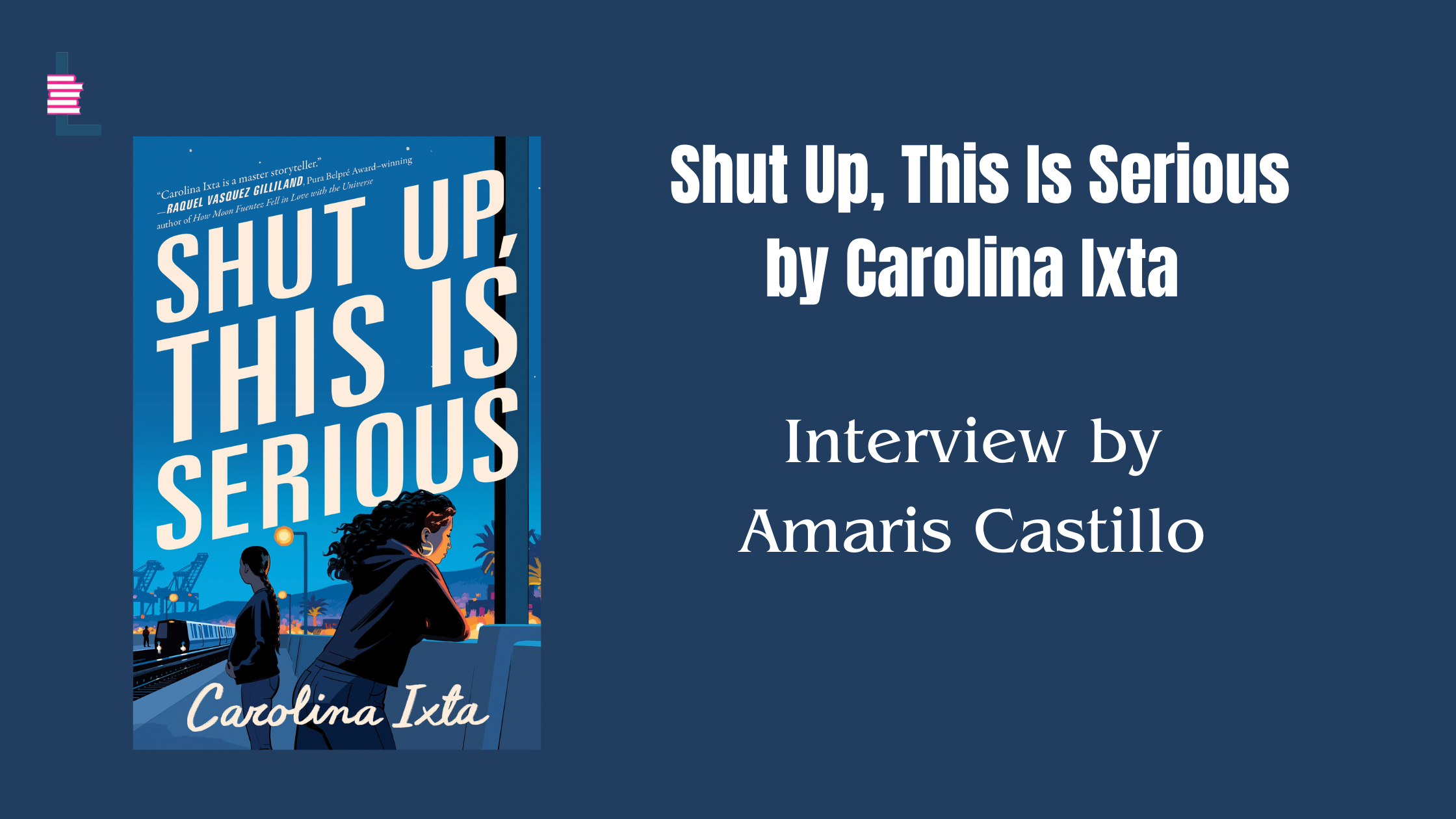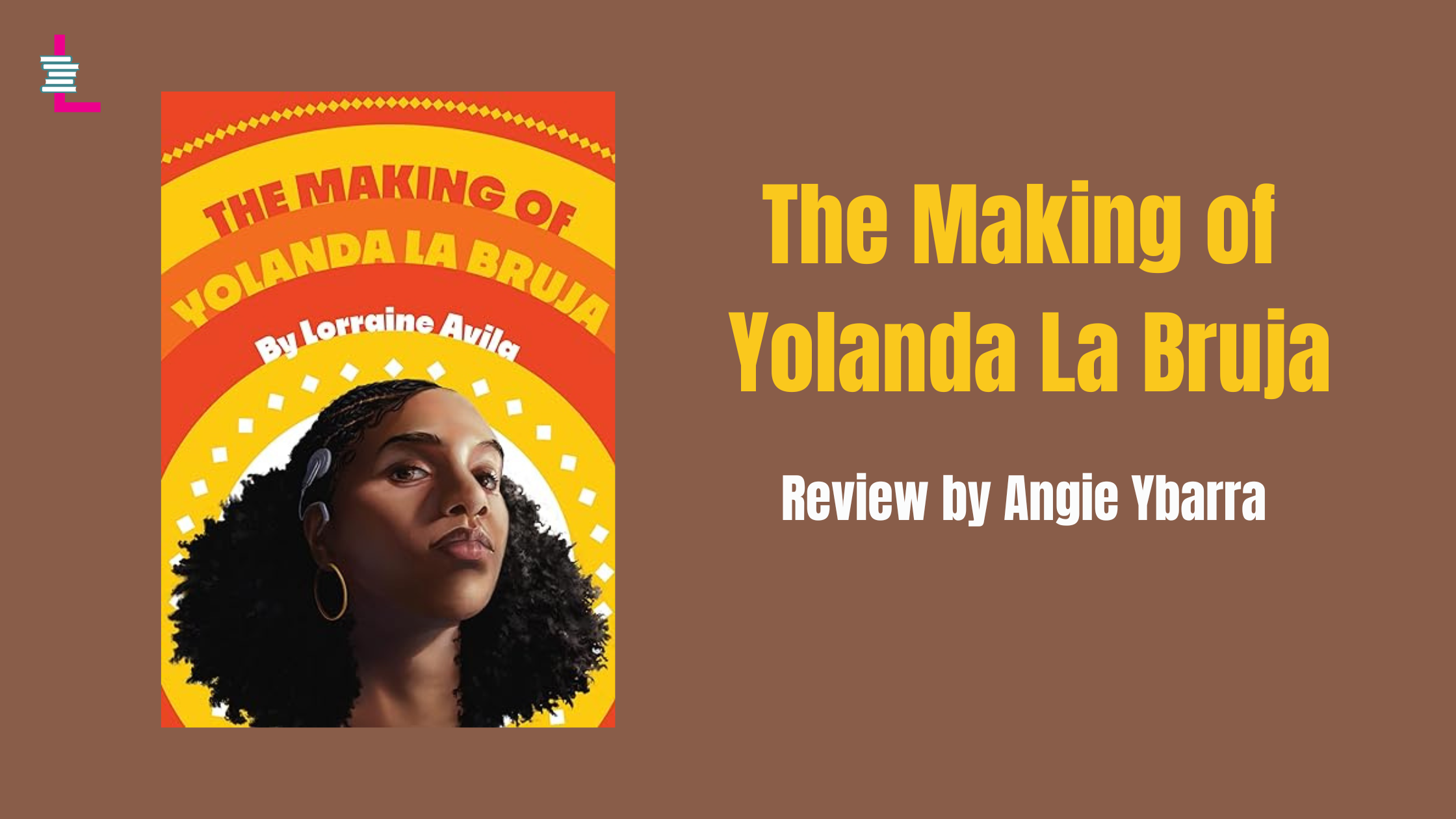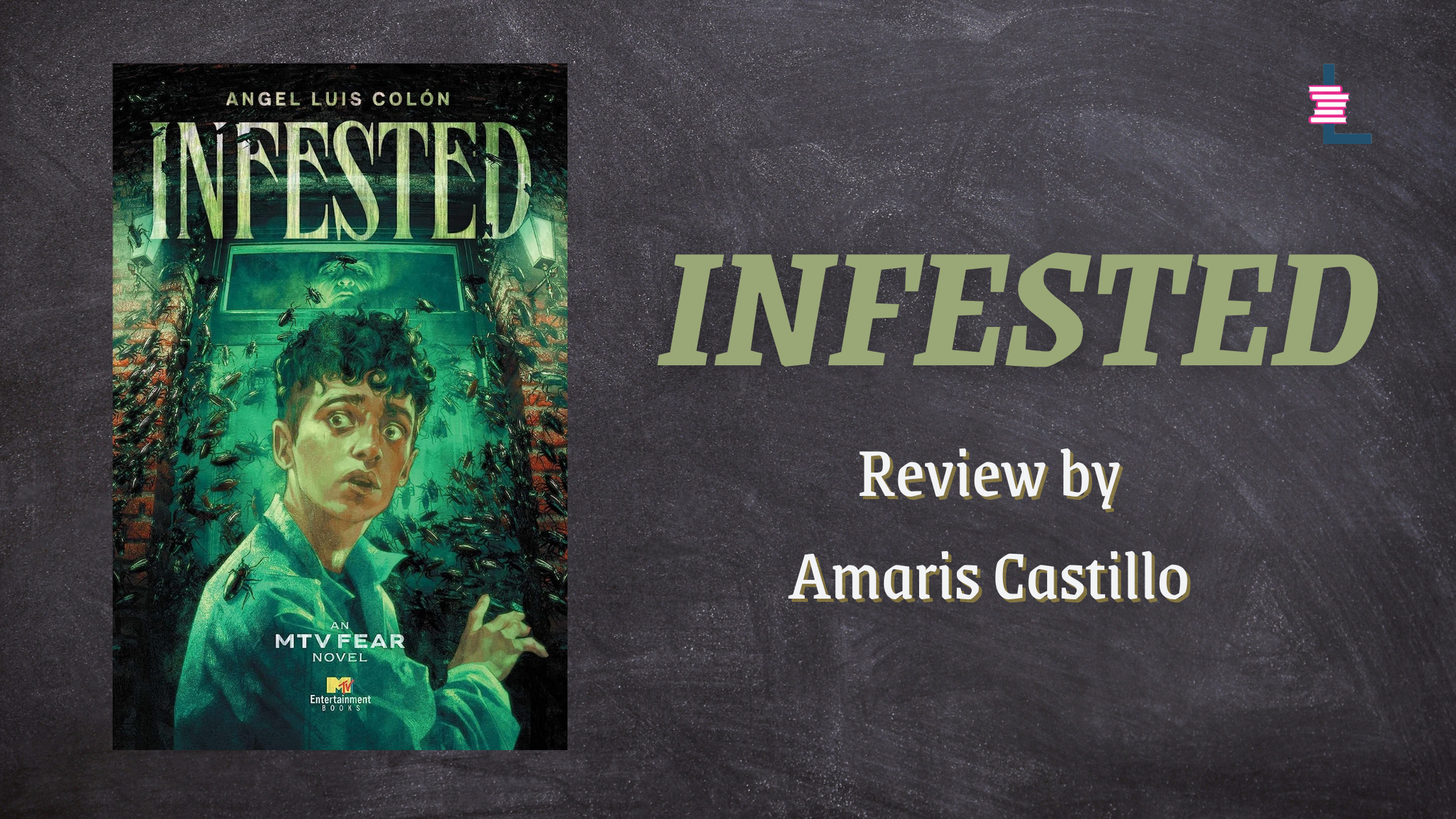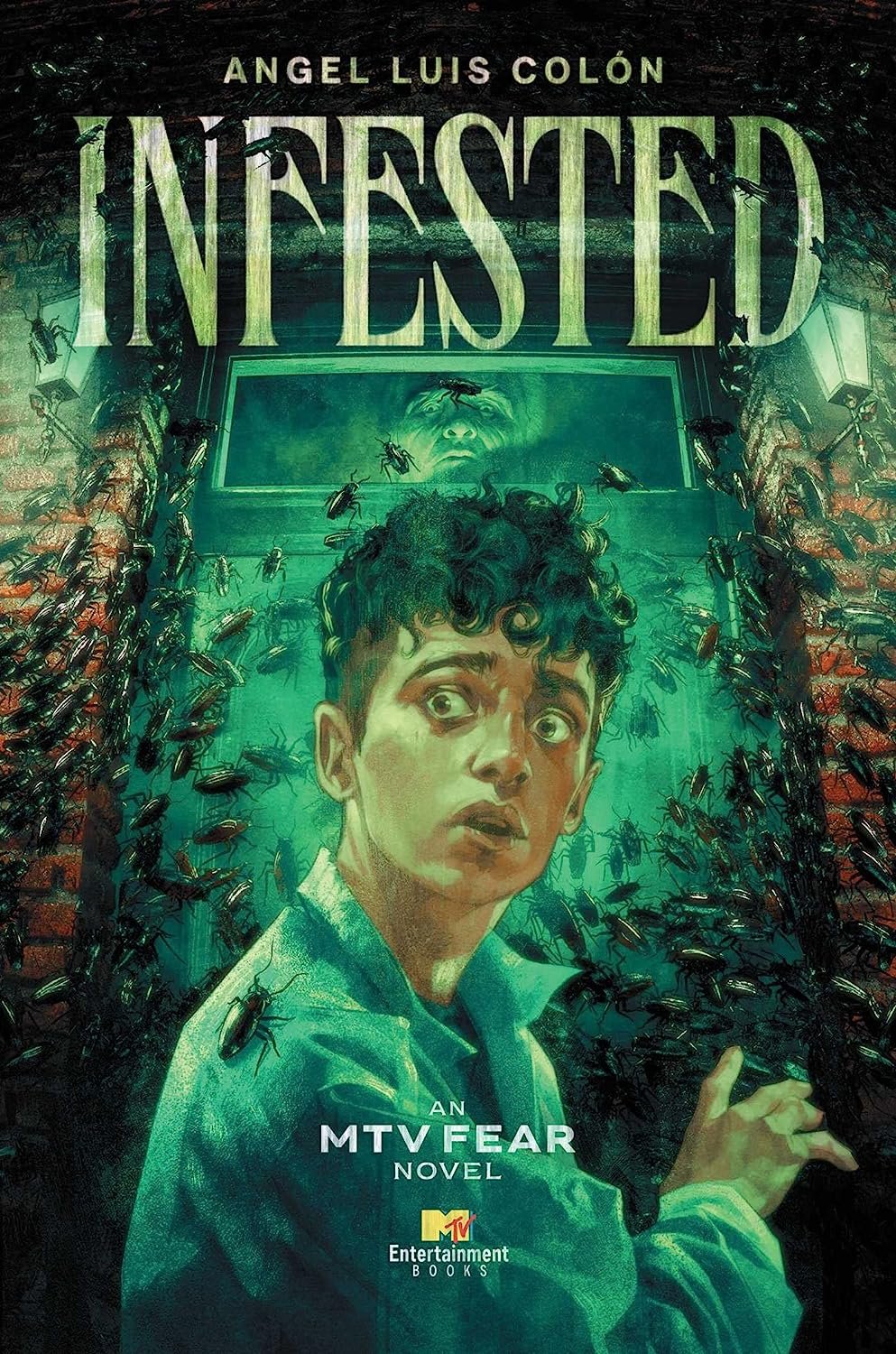Julieta Villarreal lives under a crushing weight rooted in grief and desperation about the state of the world. The 17-year-old is reeling after losing her twin sister, Ofelia, in a hit-and-run. Juli doesn’t know how to move forward without Ofe. There’s also the deterioration of Juli’s Florida home. Flash floods and tornadoes ravage the state once a month, and the number of animals that are extinct has risen.
After scoring a record-high score on an aptitude test in school, Juli learns about Cometa, a private space program enlisting high-aptitude New American teens. Their mission is to build humanity’s first extraterrestrial settlement from the ground up. Desperate to leave Florida and the sadness that engulfs her daily, Juli believes this program is her path to a better future for herself and her mom. She is convinced it’s a chance to do something big with her life. But is it really?
Out on Jan. 7 from Holiday House, This Is the Year by Gloria Muñoz is a thought-provoking YA climate fiction novel about what it means to find hope and meaning in a crumbling world. Muñoz brilliantly melds a story about a grieving teen with themes of climate change, environmentalism, and the true definition of community. The author and translator has crafted an unforgettable main character in Juli, a Latina goth who takes readers on a journey as she tries to make sense of a rapidly changing world.
Ahead of her book’s release, I spoke with my friend about the inspiration behind her genre-bending book, the term “New Americans,” and more.
This interview has been edited for clarity and brevity.
Amaris Castillo: Congratulations on This Is the Year. This book is unlike anything I’ve read. It’s incredibly inventive but also read like a window into the future. What inspired this story?
Gloria Muñoz (GM): I live in Florida, so I see the repercussions of climate change every day, especially during hurricane season. Right now there are homes that are being rebuilt, as you know, and homes that are being torn down due to weather. We’re going to have to make a lot of changes in the future. And I kept thinking, Wow, I have a kid now. I have to make these decisions and think about their future, and what we’re passing off. And so that was in my mind.
During the pandemic, I would go a lot to the beach, and there was so much red tide that it just felt staggering. What have we done to the water? And what is happening to our shores? Around that time, I was driving on a highway and I heard an NPR story about the Artemis project. I pulled over, because I was thinking about the two things coexisting: the end of this earth and the fight for its survival, alongside the amount of money and innovation and future-thinking going into space programs. And how there’s a bit of a discord there between the two. So that combination really sparked this book.
AC: Your main character, Julieta, is recruited by Cometa – this space program she believes is her ticket out of this world and to a better life for her mother. The program has an initiative for New Americans like Julieta. How did you come up with this program and what does it symbolize?
GM: Immigrants are always at the bottom. They’re incredibly necessary, and yet they’re always put to minimum wage work – tasked with cleaning up after everyone else. So when listening and reading up on Artemis and thinking about, Well, what would this look like if there was a space program inspired by this one that’s happening on Earth? And when they talk about building a space station, just like when they talk about building anything in this country, who are the bodies that are going to be breaking to put this together? I, right away, was like, it’s immigrants.
We see how things are moving politically now with the hateful rhetoric around immigration. I thought, Well, if they’re putting the space station together, it’s going to be immigrants and it’s going to be new Americans. In the future maybe we have another term that feels more palatable or more tech-like. “New Americans” came to mind as a generation and a population that should be one of promise, of wonder, of innovation, but that – in a future that’s very driven by these tech capitalist groups – they would also be tasked with the dirty work of putting together the station. Because in reality, the program is very militaristic and promises a lot. It’s supposed to solve a lot of problems. But in reality, it’s getting very cheap labor in another environment.
AC: Something that struck me throughout the book was Juli’s deep desire to leave this world. By that, I mean Florida and Earth. In your author’s note, you talk about how Florida, filled with contradictions, can be a difficult place to live. And that there are many Floridas across the country. What message were you hoping to reach readers through Julieta’s desire to escape it all?
GM: She’s overwhelmed. She’s overwhelmed by grief. She’s overwhelmed by her inability to exist in this space, in this state without her sister. And I feel like it’s this weight that she carries throughout the book. She’s not very present. She’s thinking about, Future, future, future, future. This was our plan. This is what we’re doing. Or, Past, past, past. These are all the memories that I have.
I wrote this book during a time of grief myself, where I lost two people very dear to me. And I was also going through postpartum and trying to balance everything, and feeling like, What is happening in the world? That’s the bigger existential question of it all. Carrying all of that, the easy answer is, Let me get away from here. And that could mean so many things. For Julieta, I think it means safety, refuge. Like, Let me go somewhere where I don’t have to make choices. Let me go to another planet – a space program where everything is set up and I’m told what to do. And she has to discover who she is, and how to be present in her body. So much of this book is about the body. She really does not like herself in the beginning of the book.
AC: This Is the Year is very much about grief. Julieta lost her twin sister, Ofelia. You do an incredible job at showing just how impacted Juli is by this loss. One thing I found intriguing was that the entire book is told as if Julieta is talking directly to Ofelia. Can you share what compelled you to structure her voice in this way?
GM: I’m Colombian. In my family, I’ve always seen people speaking directly to those who we’ve lost. And I was always really intrigued by it. Other people talk about people who have died in a way that makes so much distance between them. And there’s this beautiful closeness to the epistolary, the letter form, and the ‘tú’ form of like, I’m speaking directly to you. I wanted that intimacy, that closeness, that sense of, You’re not here, but you’re everywhere. And I feel Julieta carries her sister with her, and it’s the person who helps her make sense of everything. She feels this closeness. And I really wanted that to come through.
AC: There’s tremendous worldbuilding in This Is the Year. There are smart homes with AI butlers, four-legged cyborg dogs that wash dishes, and robot horses that kids ride on the weekends. There’s even an AI-dating reality show. How did you arrive at this level of worldbuilding?
GM: The book has no dates. There’s no set time period. That was something that I really, really wanted to be a part of the premise. I wanted it to feel like it could be 10 years from now or 50 years from now, depending on our choices and how much energy we put into certain capitalist ventures and technology versus the environment.
So in developing the world, I kept thinking of, Well, what is the more extreme version of AI, or of robots? Or of how we get around transportation? And I basically did that. I thought of the world we’re in right now, because a lot of it is like the uncanny valley of what’s coming. None of the things in the book feel like they’re impossible. They all feel very doable to me, especially when you think of technology and do research around how artificial intelligence is going to be used, and how driverless cars are going to be implemented across the country, probably, to help with emissions. There’s a way they can work together. But in the book, there’s this discord of profit over people, again and again, when it comes to technology. So I did use that lens in the novel.
AC: There are many themes weaved throughout your book – among them climate change and the role of humans in harm to Earth. Why was it important for you to place these on the page?
GM: These are things that we’re going to have to navigate in the future. I believe our choices that we’re making now will truly affect what world we have later on. And it is a book about rage, and rage against the ultra-wealthy and the people who are up top, not thinking of the Julietas of the world and her family. And I wanted to also address that huge disconnect between people making the choices, and people having to live with the aftermath.
AC: What do you hope readers take away from This Is the Year?
GM: The topics are very heavy. I understand that writing about climate change and the utter devastation of it all is a lot to take in. I also wanted to include a lot of humor in the book. I love these characters. They’re buoyant and they’re fun, and they’re goth and punk – just goofy kids. And I really wanted to have characters that, despite it all and maybe because of it all, are going to work together and are going to find the humor and hope in the tiny cracks, and really jump into them. I think hope is something that I wanted to communicate here, because I don’t read a lot of climate fiction that has that in it, or centers it.
While the book is about navigating grief and managing these expectations of what life should look like on Earth, it’s also very much a book about friendship. The book, as I was writing it, really became about the love and hope you can have for the people who are going to be with you regardless of everything. And who are going to make it work, and who are going to really show up for you when you need it most. And that’s what Julieta is learning.
Gloria Muñoz is the author of Your Biome Has Found You and Danzirly, which won the Ambroggio Prize and the Florida Gold Medal Book Award for Poetry. She is an Academy of American Poets Poet Laureate Fellow, a Hedgebrook Fellow, a Macondista, a Highlights Foundation Diverse Verse Fellow, and a part of Las Musas. This Is the Year is her debut novel. Visit her online at gloriamunoz.com and on Instagram at @bygloriamunoz.
Amaris Castillo is an award-winning journalist, writer, and the creator of Bodega Stories, a series featuring real stories from the corner store. Her writing has appeared in La Galería Magazine, Aster(ix) Journal, Spanglish Voces, PALABRITAS, Dominican Moms Be Like… (part of the Dominican Writers Association’s #DWACuenticos chapbook series), and most recently Quislaona: A Dominican Fantasy Anthology and Sana, Sana: Latinx Pain and Radical Visions for Healing and Justice. Her short story, “El Don,” was a prize finalist for the 2022 Elizabeth Nunez Caribbean-American Writers’ Prize by the Brooklyn Caribbean Literary Festival. She is a proud member of Latinx in Publishing’s Writers Mentorship Class of 2023 and lives in Florida with her family.




























































